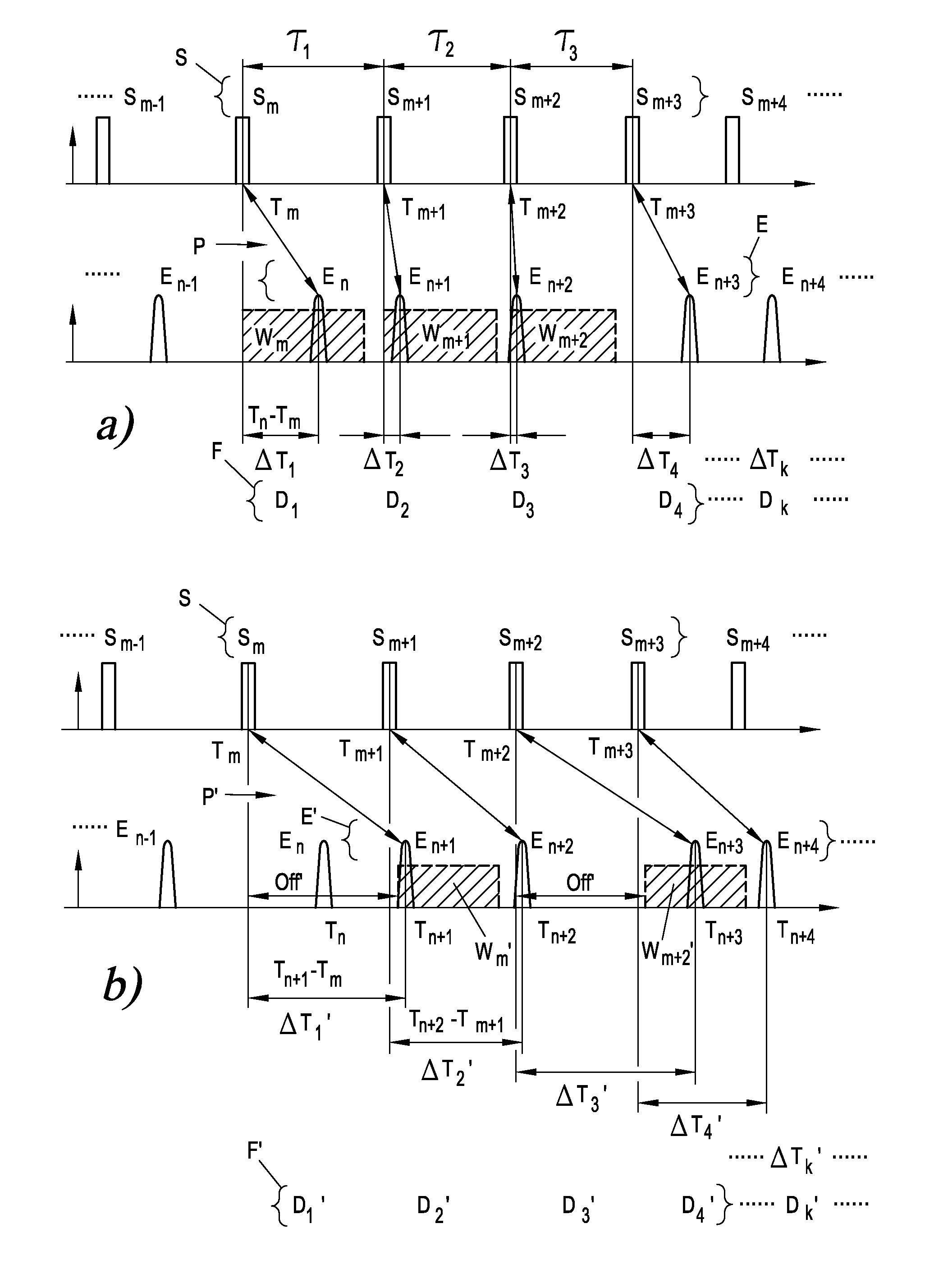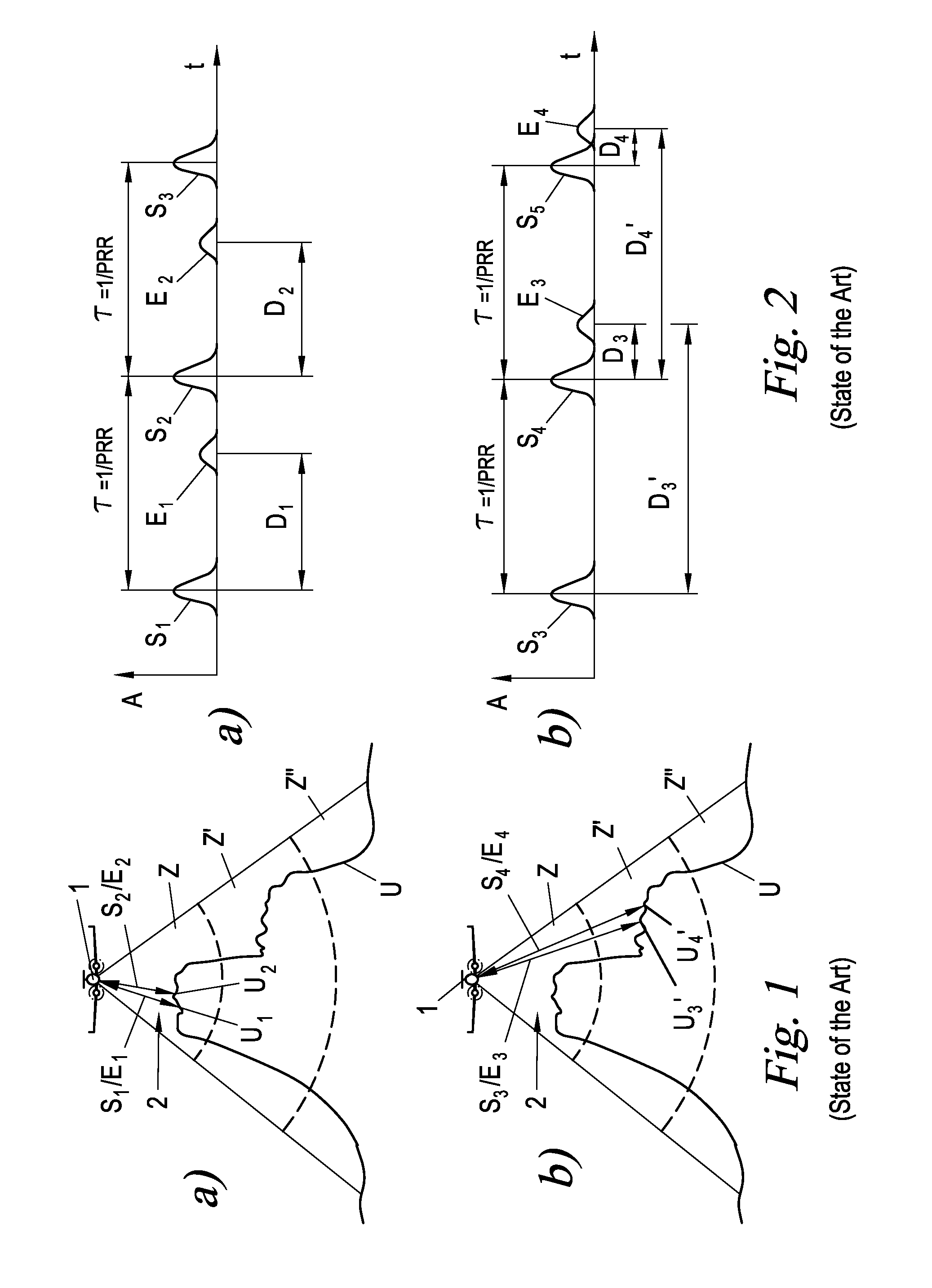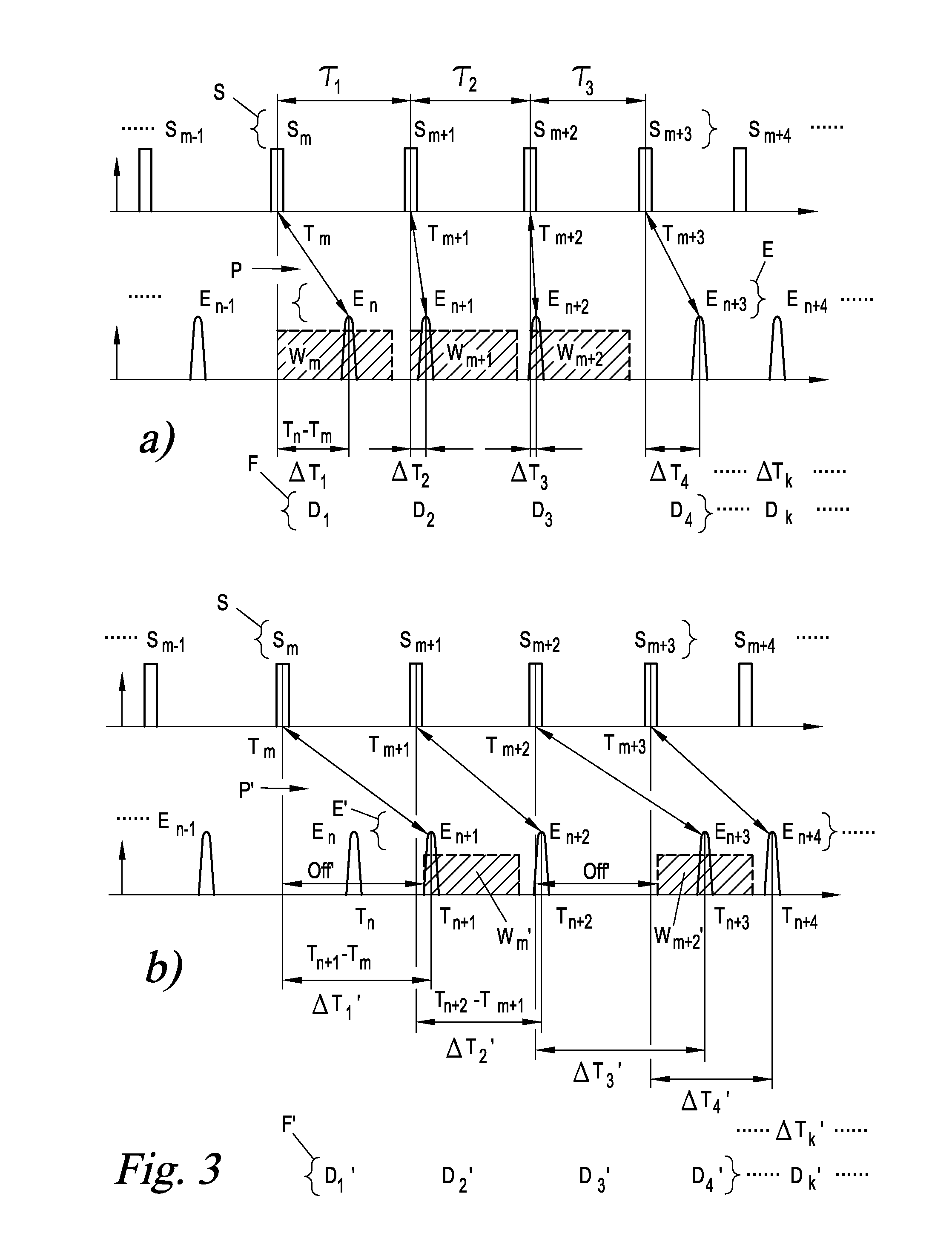Method for Measuring Distances
- Summary
- Abstract
- Description
- Claims
- Application Information
AI Technical Summary
Benefits of technology
Problems solved by technology
Method used
Image
Examples
Embodiment Construction
[0035]FIGS. 1 and 2 show the problem of pulse mapping of MTA zone-crossing measurement and scanning ranges and were already discussed at the outset. This problem is overcome by means of the method hereinafter described which is based on a signal-analytical evaluation of a large number of transmitted pulses S1, S2, S3, . . . , generally Sm, and received pulse E1, E2, E3, . . . , generally En.
[0036]The following method description specifically refers to laser pulses as transmitted and received pulses Sm, En. However, it is understood that the transmitted and received pulses Sm, En may be of any nature, for instance sound pulses in a sonar, light pulses in a time-of-flight camera (photonic mixing device, PMD), radar pulses in a radar range finder or scanner, electrical pulses in a line measuring instrument, etc., or just laser pulses in a laser range finder or scanner. Accordingly, the method described here can be generally applied to any kinds of pulse time-of-flight measuring methods...
PUM
 Login to View More
Login to View More Abstract
Description
Claims
Application Information
 Login to View More
Login to View More - R&D
- Intellectual Property
- Life Sciences
- Materials
- Tech Scout
- Unparalleled Data Quality
- Higher Quality Content
- 60% Fewer Hallucinations
Browse by: Latest US Patents, China's latest patents, Technical Efficacy Thesaurus, Application Domain, Technology Topic, Popular Technical Reports.
© 2025 PatSnap. All rights reserved.Legal|Privacy policy|Modern Slavery Act Transparency Statement|Sitemap|About US| Contact US: help@patsnap.com



